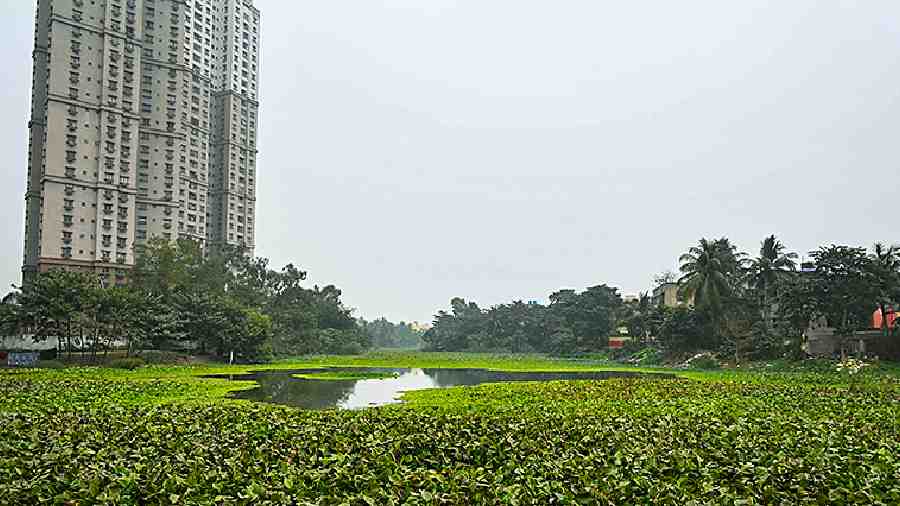Layers of silt have accumulated in the Bikramgarh Jheel in south Kolkata and removing them will cost Rs 9 crore, Swapan Samaddar, a mayoral council member in the Kolkata Municipal Corporation (KMC), said on Wednesday.
Samaddar, who heads the civic environment department, said the KMC had consulted Jadavpur University and the state fisheries department to improve the condition of the water body, which is located to the south of the South City housing complex.
An environment activist said the jheel is spread across 9 bighas (3 acres) approximately.
Samaddar was replying to a question at a meeting of the civic house about the KMC’s plans to restore the water body. A large portion of the lake is now covered with water hyacinths.
The activist said a large part had also been encroached upon. Car-repair workshops and some stores have come up on the encroached portions.
“We had asked Jadavpur University about the restoration of the water body. They said the lake is heavily silted and nothing can be done there now,” said Samaddar.
“We had also asked the state fisheries department if it was possible to start pisciculture there, but they, too, said nothing was possible unless the lake was desilted. We then assessed the cost for restoration. Only desilting will cost about Rs 9 crore.”
Samaddar later told The Telegraph the KMC had written to the state urban development department for funds. “We will start desilting work as soon as the funds arrive,” he said.
Mousumi Das, councillor of Ward 93 (which includes the lake) who asked the question at the civic house meeting, said the KMC had earlier spent Rs 2.27 crore from funds released by the state government on the restoration of the water body. The onset of the pandemic stalled the restoration.
Samaddar said water bodies in other parts of the city that were restored three or four years ago have again been covered with water hyacinths.
“The only way to prevent the growth of water hyacinths in restored water bodies is to practice pisciculture,” he said.
